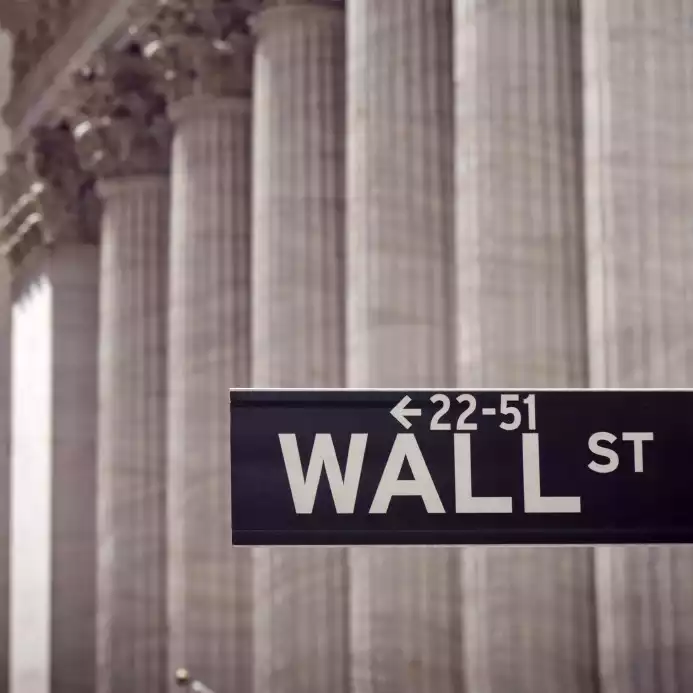Nowadays, the desire to project success and affluence has given rise to the phenomenon of 'fake rich' individuals. While many genuinely wealthy people enjoy their success quietly, some resort to conspicuous displays of wealth, often beyond their means. In this article, we explore the subtle signs that can help you identify someone faking their wealth, backed by information that sheds light on the financial pitfalls associated with such behavior.
1. Social Media Subscribers and Showcasing Wealth
Currently, platforms like Instagram and TikTok have turned into glittering stages where individuals meticulously craft an online persona, showcasing a lifestyle dripping with affluence — designer clothes, luxury cars, showing off a lot of money, and a treasure trove of expensive items. Yet, beneath the dazzling facade lies a stark reality: many of those projecting opulence are caught in the intricate web of paycheck-to-paycheck living, leaning heavily on credit cards to sustain their seemingly extravagant displays.
The allure of projecting success on social media has birthed a trend where individuals invest considerable time and resources to maintain a carefully curated online identity. Profiles are adorned with polished images and engaging full videos, offering a glimpse into a life that seamlessly blends abundance and sophistication. However, despite these visually appealing representations, a significant number of individuals grappling with financial instability resort to using credit cards as a financial crutch to uphold their flashy displays.
A comprehensive study by Credit Karma and Qualtrics1 reveals a staggering statistic — almost 40% of millennials find themselves ensnared in a web of debt, striving to keep up with the spending habits showcased on social media. This statistic sheds light on the intense pressure not just to match but to outshine the ostentatious displays seen online, fostering a cycle of financial unsustainability. The quest for validation through likes, shares, and comments propels individuals into a cycle of conspicuous consumption, where financial decisions are driven by the desire to maintain an online image rather than be grounded in prudent personal finance practices.
In major metropolises like New York, and London, and even in neighborhoods next door, the pressure to conform to the social media-driven narrative of success is palpable. The constant exposure to the extravagant lifestyles of the real rich, showcased in glossy videos and podcasts, instills a sense of aspiration that, for many, transcends financial prudence. This phenomenon is not confined to a single geography; it has a global footprint, with influences from China to London shaping the collective perception of success. As individuals chase the illusion of a million followers and a life filled with luxury items, the disparity between the projected online narrative and the financial struggles faced offline becomes more pronounced. The pressure to conform to the lifestyles of the wealthiest people, perpetuated by social media, can inadvertently lead to a spiral of debt and financial instability. In essence, the pursuit of validation through virtual metrics eclipses the importance of genuine financial well-being and responsible personal finance practices.
2. Designer Clothes and Brand Names Over Financial Literacy
A distinctive marker of a fake rich persona often emerges through an unwavering emphasis on brand names and designer clothing, overshadowing a critical focus on financial literacy. Individuals engrossed in the 'fake rich' trend tend to prioritize the outward display of wealth through recognizable symbols over cultivating an understanding of essential financial concepts. The NGPF's 2022 State of Financial Education Report2 underscores the alarming reality that a substantial portion of millennials is left susceptible to poor financial decision-making due to a pervasive lack of financial education.
Even as someone confidently parades in the latest Gucci or Hermes attire, the absence of basic financial knowledge, such as comprehending interest rates and investing, lays bare a significant disconnection between their projected image of affluence and actual financial stability. This overemphasis on material possessions can plunge individuals into a perilous spiral of debt, as illuminated by Businessinsider's report3 indicating that over 54% of millennials find themselves burdened with credit card debt.
In the pursuit of emulating the lifestyles of the truly wealthy, the deceptive allure of designer labels often takes precedence over the cultivation of financial literacy. This superficial prioritization not only perpetuates the 'fake rich' trend but also places individuals at considerable risk of long-term financial repercussions. The consequences of this misalignment between appearances and financial understanding extend far beyond the realm of fashion, infiltrating the intricate landscape of personal finance, potentially leaving a lasting impact on economic well-being.
3. Expensive Cars vs. Lack of Savings
A telltale sign of someone entangled in the web of fake wealth is the stark incongruity between the sleek exterior of their flashy sports car and the stark absence of savings beneath the surface. Entrepreneurs typically channel their resources into high-end properties and long-term financial security, recognizing the enduring value of such investments. Conversely, those projecting a facade of affluence may opt for luxury cars over a financially stable home, unwittingly becoming contributors to a perilous cycle of debt and financial instability.
Bankrate's insightful report4 lays bare the concerning reality of savings in the United States, with a staggering 49% of the population grappling with either no emergency savings or a diminished amount compared to the previous year. This widespread scarcity of a financial safety net propels many into a reliance on credit cards or personal loans, amplifying the already daunting challenges associated with escaping the clutches of debt. The paradoxical scenario of individuals steering sleek sports cars but lacking a fundamental financial cushion paints a vivid picture of the consequences of prioritizing short-lived displays of opulence over lasting financial stability.
The apparent contradiction between a luxury car and a dearth of savings underscores a broader societal trend where appearances are prioritized over financial prudence. The seductive allure of high-performance vehicles often blinds individuals to the enduring value of financial preparedness. As the disparity between conspicuous consumption and financial vulnerability widens, it becomes imperative for individuals to reassess their priorities, recognizing that the pursuit of ostentatious symbols can come at the expense of genuine financial security.
4. Conspicuous Spending and Pressure to Keep Up Appearances
The unrelenting pressure to maintain an illusion of wealth becomes a potent catalyst for conspicuous spending among those entangled in the web of fake affluence. From opulent clothing to extravagant luxury items, the relentless compulsion to project an image of affluence often translates into a perilous path of increased debt and unsound financial decisions.
The pervasive fear of missing out (FOMO), as illuminated by the Credit Karma and Qualtrics study5, underscores the psychological dynamics that propel individuals into a cycle of excessive spending. A staggering 44% of respondents express concerns about missing out on exclusive experiences, while 36% admit to fearing social exclusion if they fail to spend more. This psychological pressure becomes a driving force compelling fake rich individuals to overspend on non-essential items, further exacerbating their precarious financial instability.
The burden of sustaining appearances not only leads to impulsive spending but also perpetuates a cycle of financial stress for those attempting to mirror the lifestyles of the truly affluent. As the fear of missing out takes precedence, individuals may find themselves trapped in a relentless pursuit of maintaining an unsustainable façade, contributing to a range of financial challenges that extend beyond the immediate allure of luxury goods. Ultimately, the pressure to keep up appearances becomes a double-edged sword, wielding the potential for social validation while concurrently driving individuals deeper into the quagmire of financial insecurity.
5. Private Jets and Luxury Items vs. Living Paycheck to Paycheck
A common tactic employed by fake rich individuals is the flaunting of extravagant possessions such as private jets and high-end luxury items. These symbols, synonymous with substantial wealth, can, upon closer examination, unveil a stark reality. A significant number of individuals leveraging these opulent displays find themselves trapped in the disconcerting cycle of living paycheck to paycheck. The desire to perpetuate an illusion of opulence becomes a catalyst for financial irresponsibility, where individuals overextend themselves by overspending on status symbols without establishing a robust financial foundation.
The prevalence of paycheck-to-paycheck living is underscored by a Businessinsider report, laying bare the financial landscape of more than 34 million US citizens who were spending beyond their means in 2022. This statistic paints a vivid picture of the challenges faced by those entangled in the 'fake rich' paradigm. The pressure to showcase a specific lifestyle, coupled with the allure of status symbols, often propels individuals into the treacherous territory of accumulating debt, further exacerbating the hurdles on their path to achieving genuine financial security.
The juxtaposition of private jets and luxury items against the backdrop of paycheck-to-paycheck living unveils a nuanced narrative of wealth projection. What appears as an extravagant display may indeed be a fragile façade concealing the financial strain beneath. As individuals navigate the delicate balance between projecting affluence and grappling with financial instability, the consequences of this high-stakes masquerade extend far beyond the material realm, impacting their long-term financial well-being.
6. Overspending on the Latest Trends and Apple Products
Fake rich individuals often fall victim to the allure of the latest trends and cutting-edge technology, especially Apple products. While genuine wealthy individuals may selectively indulge in premium gadgets, those draped in the trappings of fake wealth often prioritize these purchases at the expense of essential financial pillars like savings and investments. The relentless drive to stay ahead of the trend curve becomes a catalyst for impulsive spending, pushing them perilously close to the edge of accumulating debt.
A revealing snapshot of this financial behavior comes to light through a survey by Bankrate6, which illuminates that 36% of Americans find themselves in a precarious position, with higher credit card debt than emergency savings. This statistic underscores a troubling trend wherein individuals opt for immediate gratification over the cultivation of long-term financial stability. The allure of the latest trends and high-tech gadgets often lures those ensnared in the trap of fake wealth into a cycle of impulsive spending, further jeopardizing their financial well-being.
As the compulsion to own the latest Apple products intensifies, the consequences extend beyond the allure of cutting-edge technology. The indulgence in these trends becomes a visible marker of the 'fake rich' lifestyle, masking the underlying financial fragility that accompanies such choices. While the sleekness of the latest gadget may project an image of affluence, the reality for many caught in this spiral is a growing burden of debt and a compromise on the foundational principles of financial health.
7. Lack of Investments in Real Estate and Small Businesses
Wealthy individuals often diversify their portfolios through investments in real estate and small businesses. These calculated decisions are geared towards fostering long-term financial growth and stability. However, those entangled in the web of the 'fake rich' trend often deviate from this prudent path, directing their resources towards short-lived luxuries instead of sustainable investments. This stark contrast in financial strategies accentuates the absence of a well-thought-out investment plan, leaving these individuals vulnerable to missed opportunities for wealth accumulation and endangering their financial future.
The wisdom behind investing in real estate and small businesses lies in the potential for assets to appreciate over time, contributing to the creation of enduring financial security. Genuine success, whether attained through entrepreneurship or a professional career, is marked by a profound understanding of the significance of building assets that withstand the test of time. Unfortunately, those captivated by the allure of the 'fake rich' trend tend to prioritize immediate status symbols over the potential benefits of investments that pave the way for lasting financial prosperity.
The pursuit of fleeting materialistic symbols over enduring financial stability reflects a fundamental flaw in the financial mindset of those adopting the 'fake rich' persona. While successful individuals prioritize investments that yield long-term returns, those immersed in the allure of immediate gratification may inadvertently compromise their financial future by neglecting the intrinsic value of strategic investments in real estate and small businesses. This divergence in financial philosophy underscores the fragility of the 'fake rich' trend and its potential repercussions on the economic well-being of those ensnared within its allure.
8. Talking About Money vs. Genuine Financial Understanding
A telltale sign of someone faking wealth is their inclination to frequently discuss money without demonstrating a genuine understanding of financial management. While appearing knowledgeable about investments and financial intricacies might be part of projecting success, a lack of substance behind the talk reveals the facade. True financial success involves a nuanced comprehension of budgeting, saving, and investing.
The NGPF's 2022 State of Financial Education Report sheds light on the stark reality that only 16% of millennials possess basic financial knowledge. This lack of understanding can lead to impulsive spending and poor financial decisions, characteristics often associated with those trapped in the illusion of fake wealth.
The dichotomy between talking about money and possessing genuine financial acumen becomes increasingly evident in the wake of financial challenges. The rhetoric of those projecting fake wealth may sound impressive, but when faced with the practicalities of budgeting and investment, the shortcomings become glaring. True financial understanding transcends mere conversation; it is a dynamic ability to navigate the intricacies of fiscal responsibility, a trait that distinguishes the genuinely wealthy from those merely weaving a narrative of prosperity.
9. Socializing on Luxury Outings vs. Limited Savings
Fake rich individuals may prioritize social events at high-end venues, frequenting expensive restaurants and exclusive outings to maintain appearances. However, this lavish socializing often comes at the expense of limited savings. The desire to be seen in elite circles can lead to overspending on non-essential experiences, further compromising financial stability.
Bankrate's report reinforces the concerning trend, with 51% of the US population having more emergency funds in their savings account than in their credit card debt. The disconnection between socializing extravagantly and lacking financial preparedness highlights a fundamental flaw in the financial mindset of those projecting fake wealth.
The concerning trend illuminated by Bankrate's findings underscores a pervasive issue: the trade-off between chasing a lifestyle of prestige and the neglect of fundamental financial principles. As fake rich individuals navigate the social circuit in pursuit of validation and status, the price they pay extends beyond the luxury outings and into the realm of financial vulnerability. The pursuit of an image of affluence can inadvertently lead to a fragile financial foundation, revealing the high cost of prioritizing social appearances over long-term financial well-being.
10. Living Beyond Means with High Credit Card Debt
Living beyond one's means is a hallmark of fake wealth. The inclination to overspend without a practical budget or financial plan often results in high credit card debt. The temptation to acquire possessions beyond one's financial capacity contributes to a lifestyle sustained by credit or loans, perpetuating a cycle of financial instability.
The average debt of $27,251 per millennial in the US, as reported by Credit Karma and Qualtrics, underscores the prevalence of living beyond means among those attempting to project a facade of affluence. This financial behavior not only jeopardizes short-term financial goals but can also hinder long-term aspirations, such as homeownership or retirement savings.
In the relentless pursuit of projecting a facade of wealth, the 'fake rich' often find themselves entangled in a web of financial decisions that compromise both their present and future financial well-being. The cycle of accumulating high credit card debt becomes not only a symptom of their extravagant aspirations but also a hindrance to achieving the stability required for enduring financial success. As they grapple with the repercussions of living beyond their means, the ability to secure a foothold in the realms of homeownership or build a robust foundation for retirement becomes increasingly elusive.
11. Chasing Followers vs. Building Net Worth
In the age of social media, the number of followers and subscribers often becomes a metric of success. Fake rich individuals may prioritize building an online persona over genuinely building their net worth. The emphasis on external validation through social media metrics can lead to misguided financial priorities, as the pursuit of popularity takes precedence over prudent financial decisions.
While genuinely successful people may also engage in social media, their focus tends to be on building real-world assets and financial security. The contrast between chasing online popularity and building a substantial net worth reveals the disparity between the appearances projected online and the financial realities of those caught in the 'fake rich' trend.
This social media dilemma encapsulates a broader societal shift, where the allure of immediate virtual gratification overshadows the patient and strategic approach required to amass genuine wealth. As individuals navigate the delicate balance between online popularity and financial prosperity, it becomes crucial to discern whether the pursuit of likes and shares is an end in itself or merely a means to build a robust and enduring net worth.
Conclusion
In unraveling the labyrinth of 'fake rich' indicators, we find ourselves at the crossroads of perception and reality. The allure of designer labels, the ostentatious displays of luxury, and the social media mirage all converge to create a facade that can easily deceive. Yet, in this intricate dance between appearances and authenticity, one theme emerges with unwavering clarity - the imperative of financial literacy.
True wealth, it appears, is not in the flaunting of ephemeral symbols but in the mastery of financial principles. As we contemplate the tales of leased luxuries, exaggerated holdings, and private jet illusions, the resounding lesson is that the road to affluence is best navigated with a compass of financial acumen.
Consider the statistics on financial literacy: A national survey reveals a concerning gap in financial knowledge among individuals projecting 'fake rich' behaviors. This lack of understanding of fundamental financial principles underscores the importance of education in the quest for genuine prosperity.
The conclusion is not merely a revelation of deceptive practices but a call to arms for genuine wealth building. In a world where illusions may dazzle, let financial literacy be the guiding star toward a future of enduring prosperity. It's a journey that transcends the superficial trappings of wealth, inviting individuals to step into the realm of true financial empowerment.
References:
- Credit Karma and Qualtrics - Nearly 40% of millennials overspend to keep up with friends
- NGPF's 2022 State of Financial Education Report - New report finds only 16% of millennials qualify as 'financially literate'
- Businessinsider - More than half of millennials have credit card debt, and it reflects a financial reality other generations didn't face
- Bankrate - Most Americans don't have enough emergency savings, despite the strong job market
- Credit Karma and Qualtrics study - FOMO debt on the rise: Nearly 50% of millennials overspend to keep up with friends
- Bankrate - Americans are saving less and being buried in credit card debt









